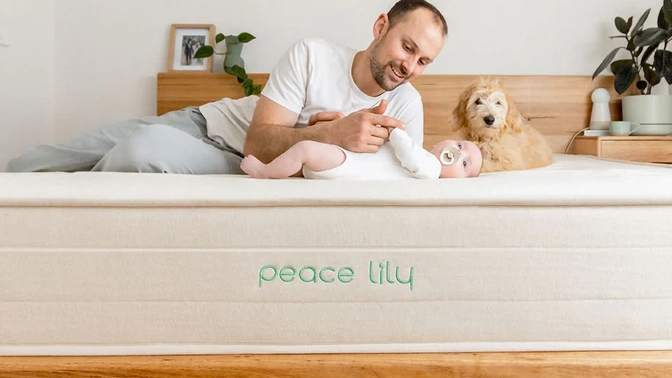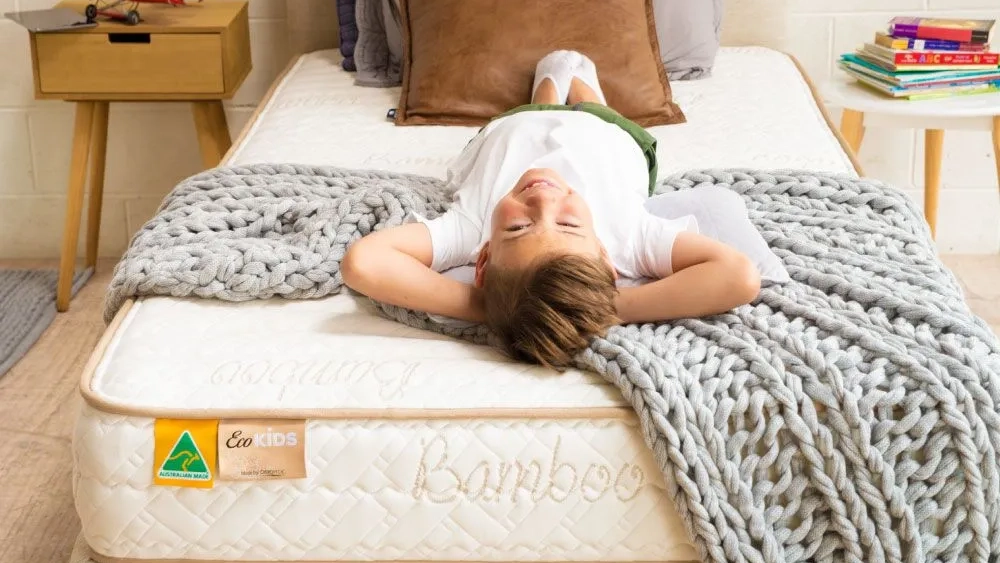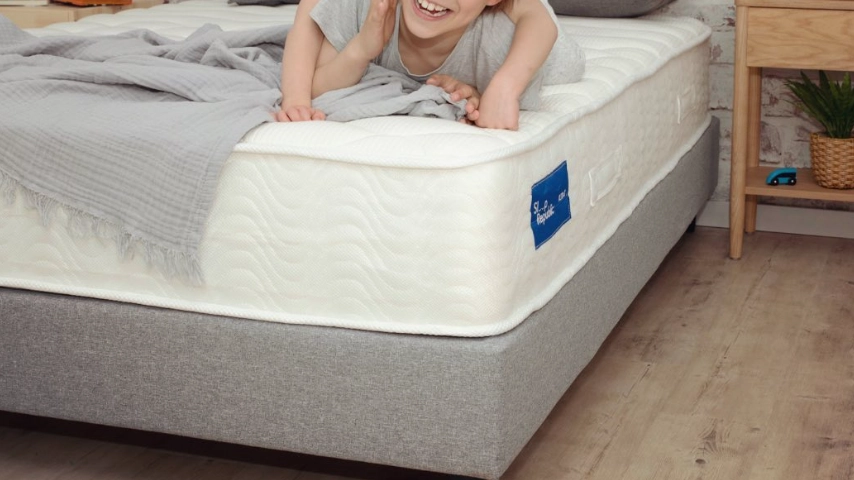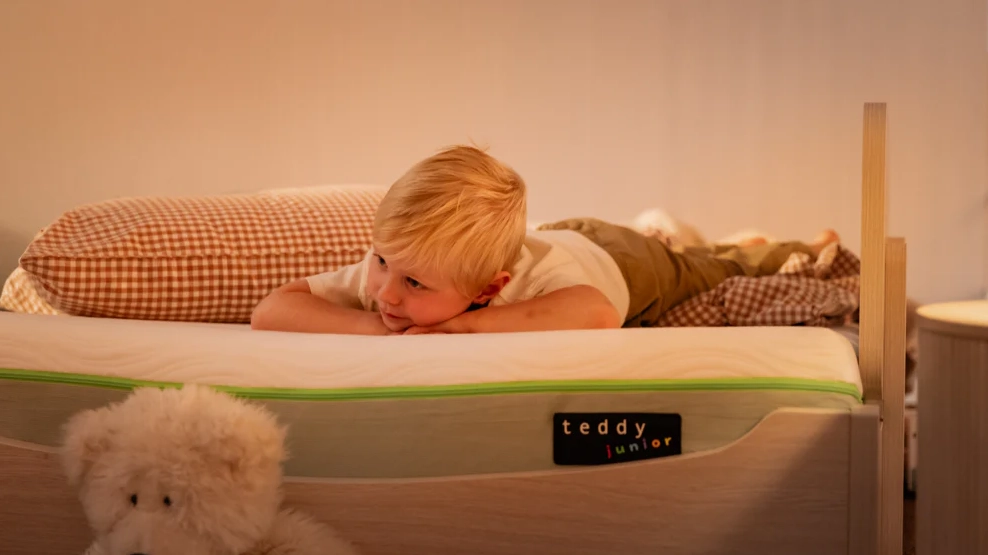Best Mattress for Kids – How to Choose the Right One
Sleep isn't just rest for children—it's an active growth, learning, and development period. During these crucial years, your child's body undergoes remarkable changes, from rapid bone growth to cognitive development and hormonal adjustments. Finding the best mattress for kids is essential—it provides the right support, enhances sleep quality, and promotes healthy growth.
Think of your child's mattress needs, like their clothing sizes - what fits perfectly today won't work tomorrow. The perfect mattress for your 3-year-old won't serve your 11-year-old's needs. But don't worry - you won't need to buy a new mattress for each stage of your child's growth. The market offers versatile mattress options, and the key is to invest in a natural, safe mattress that provides both adaptability and long-term support.
Best Kid Mattresses in Australia
Peace Lily
Editor’s ChoiceLatex Mattress
This mattress features triple-layered Dunlop latex with a dual-firmness design (firm & medium/firm) for evolving developmental kids' sleep. The organic cover delivers temperature regulation without synthetic compounds. Its exceptional 25-year warranty transforms initial investment into enduring value—creating a completely non-toxic sleep environment.
- Cover:100% Organic Cotton
- Internal Layer:3 Layer of Latex Foam
- Size:Single, Long Single, King Single, Double, Queen, King
- Certification:GOTS
Eco Kids
Eco Kids Mattress
Expertly crafted with responsive pocket springs and premium Dunlop latex, delivering firm support for developing bodies. The bamboo-cotton blend cover provides good temperature regulation while reinforced edges prevent roll-offs. Despite impressive certifications, it contains 2cm of synthetic foam but still offers adequate safety for children's sleep environment.
- Cover:100% Cotton
- Internal Layer:Latex Foam, HygroFlex Foam, Pocket Spring
- Size:Single, Long Single, King Single, Double
- Certification:Australian Made, OEKO-TEX Standard 100
Sleep Republic
Kids Mattress
Brilliantly engineered with a 5-zone pocket spring system that delivers targeted support precisely where growing bodies need it most with one side medium-firm. The natural latex layer creates breathability while reinforced edges eliminate roll-off concerns. The 40% polyester cover content feels incongruous at this premium price point.
- Cover:30% Cashmere, 30% Organic Cotton , 40% Poly
- Internal Layer:3 Layer of Latex, Pocket Spring
- Size:Single, King Single, Double
- Certification:OEKO-TEX, CertiPUR-US
Koala
Joey Kids Mattress
Crafted with practical parenting needs in mind, this mattress features a convenient washable TENCEL. The innovative Kloudcell technology paired with pocket springs provides good breathability and firm support (8/10) for proper kids' spinal alignment. At 15cm in height, it fits neatly into bunk beds but lacks long-term adaptability for growing children.
- Cover:100% Tencel, 100% Poly (Underside)
- Internal Layer:Polyurethane Foam, Pocket Springs
- Size:Single
- Certification:OEKO-TEX, CertiPUR-US
teddybed
Teddy Junior LUX
This dual-sided mattress features waterproof protection and washable covers. The firm side supports toddlers, while the medium-firm side accommodates older children. Despite a cute mascot and extended trial period, the fully synthetic construction compromises breathability and raises chemical exposure concerns during crucial developmental years.
- Cover:59% Polyester, 41% Recycled Polyester
- Internal Layer:Bamboo + Form, Memory Foam,
- Size:Single, King Single, Double
- Certification:OEKO-TEX, CertiPUR-US
Unlike review sites maintaining brand relationships to protect affiliate revenue, we operate with complete independence in our children's mattress recommendations. When products impact your child's well-being, we believe honesty must prevail over financial incentives. Our evaluation system examines critical factors affecting sleep quality and safety. We measure firmness distribution and spinal alignment while conducting toxicological analysis beyond standard certification requirements—identifying substances that meet regulations yet may present long-term exposure risks.
Independent specialists and osteopaths validate our review of each recommendation. For every children's mattress, you can examine our detailed evidence and understand precisely why we assigned each product its specific rating.
Many of our recommended mattresses aren't explicitly labelled 'for kids' - perfectly fine. A mattress doesn't need the 'kids' label to suit children. Three essential criteria are proper firmness, non-toxic materials, and adaptability to support your child's growth.
Age-specific sleep needs: From toddler to teenager
Finding the right mattress means understanding how your child's sleep needs evolve through different stages of growth. Let's break down three critical age periods: early childhood, primary years, and adolescence. Each has unique requirements and challenges.
Whether your child is just moving from their cot or entering their teenage years, this guide will help you understand exactly what to look for in support, comfort, and durability at each stage—so you can confidently choose the best mattress for kids based on their age and needs.
Since children are susceptibleto chemicals and spend up to 12 hours a day in bed, choosing a mattress made with natural, non-toxic materials isn't just a preference - it's necessaryfor their healthy development. As we explained in our best cot mattress guide, children's bodies continue to absorb environmental substances at a high rate until their primary years - making natural, toxin-free materials non-negotiable during these crucial early stages of development.
The transition from a cot to a toddler mattress is an exciting milestone but comes with specific sleep requirements. Children's bones are still largely cartilaginous at this age, and their spines are rapidly developing.
They're also becoming more active sleepers, often tossing and turning. These early years are crucial for establishing healthy sleep patterns and spinal alignment. While they may ask for the softest, cloud-like bed, their growing bodies need significantly firmer support.
What Your Kids Need
- Firmness: Firm (8/10)
- Mattress Type: Natural latex, high-resilience foam, or pocket springs with firm support
- Materials: Natural, breathable materials with good temperature regulation
- Support Features: Multi-zoned support for spinal alignment
What to Avoid
- Ultra-soft or plush mattresses that compromise spinal development
- Memory foam that traps heat and restricts movement
- Chemical-treated materials affecting respiratory health
This age comes with dramatic changes in growth and activity. School-age children experience regular growth spurts and carry heavy backpacks, impacting spine and sleep quality.
Their muscles are developing, improving posture control, but they still need support. This is also when kids begin to develop comfort preferences.
What Your Kids Need
- Firmness: Medium-firm (6–7/10)
- Mattress Type: Natural latex, hybrid, or quality pocket springs
- Materials: Durable materials for increased activity
- Support Features: Enhanced edge support for sitting and playing
- Additional: Good pressure relief for growing bodies
What to Avoid
- Mattresses with poor edge support
- Excessive memory foam layers that trap heat
- Budget materials that lose shape quickly
- Single-zone support systems
- Poor-quality comfort layers that compress quickly
Teenage years bring rapid changes during puberty. Growth spurts can cause growing pains that affect sleep.
Teenagers' bodies resemble adult proportions and their preferences become more defined. They also spend more time studying or reading in bed.
What Your Kids Need
- Firmness: Medium to medium-firm (5–7/10)
- Mattress Type: Premium hybrid, latex, or advanced pocket spring
- Materials: High-quality, durable with good pressure relief
- Support Features: Multi-zone support with enhanced comfort layers
- Additional: Strong edge support for sitting or studying in bed
What to Avoid
- Budget mattresses that can't handle weight changes
- Mattresses without temperature regulation
- Basic spring systems lacking comfort layers
Choose a mattress that grows with your child
We understand your concern about all these age-specific requirements. You might wonder, "Do I need to buy a toddler mattress, then a kid's mattress, and later switch to a teenage mattress when my child finds the current one too firm?" In addition to the money already spent on the cot mattress, protectors, and other bedding essentials, this can feel overwhelming.
But here's the good news: you don't need multiple mattresses. A quality single kids’ mattress (92cm x 188cm) is the perfect size to see your child through from their first 'big bed' to their teenage years. While you might be tempted to start with a smaller toddler bed, investing in a single or long-single mattress makes more financial sense.
Not only does it provide plenty of space for growing bodies, but it also eliminates the need for future size upgrades. With the right strategy, one quality single mattress can provide the perfect sleep surface throughout your child's development.
For Children Under 10:
Focus on a firm, high-quality mattress that will last through their developmental years. A flippable or adjustable firm mattress made with natural latex or a premium hybrid design provides the perfect foundation.
While the initial cost might be higher, these mattresses offer excellent value over time as they can adapt to your child's changing needs.
When your child needs more comfort during growth spurts or is approaching adolescence, you have options: If your mattress allows it, flip to the medium/firm side, adjust the firmness settings, or simply add a topper—all while keeping that crucial support.
For Children 10 and Older:
When shopping for an older child or teenager, you have more flexibility in your choices.
While proper support remains crucial, you can now more heavily consider comfort preferences and sleep styles. A high-quality hybrid mattress or memory foam option with good temperature regulation and non-toxic certification could be ideal. Natural latex mattresses are particularly worth considering at this age. They offer excellent pressure relief for growing bodies while adapting naturally to different sleep positions.
Remember to look for options with enhanced edge support, as teenagers often use their beds for studying, sitting, and sleeping.
Modern mattresses are designed to adapt and evolve, just like your child. When shopping for a kid mattress, look for these key features - having just one of them makes the mattress a smart choice:
- A dual-sided design offering both firm and medium-firm surfaces.
- Innovative layering systems that you can adjust over time.
- Customisablesupport zones that accommodate growing bodies.
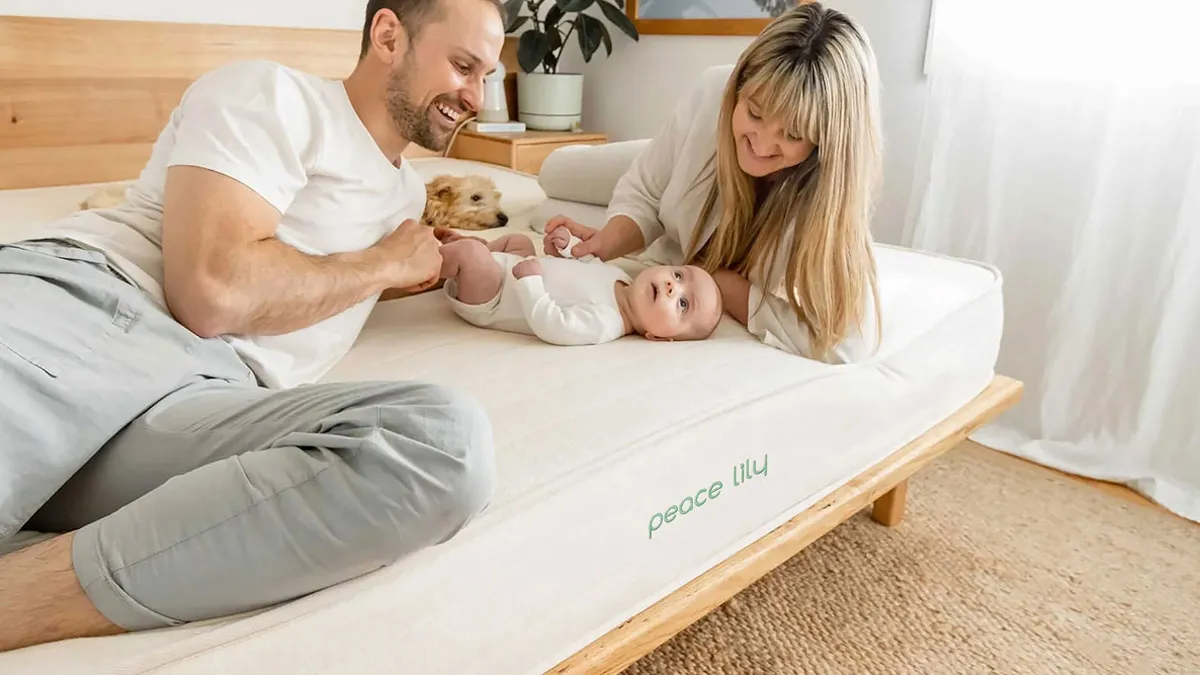
The mattress topper strategy: A parent's secret weapon
Do you already have a quality firm mattress that's still in excellent condition thanks to your careful protection? Don't rush to replace it if your child starts complaining about firmness. Mattress toppers are your perfect solution. They protect and extend your mattress's life, providing a soft comfort layer while maintaining essential support.
Here's our recommended strategy for long-term mattress success:
- Start with a quality natural latex or hybrid mattress, using the firm support side.
- As your child grows, switch to medium-firm if your mattress allows (through flipping or adjustable layers).
- During teenage years, flip back to the firm side (if possible) and add a soft topper - this perfect combination maintains essential support while providing the comfort they crave.
This approach saves money and ensures your child always has the perfect sleep surface throughout their growing years.
Remember: Children often cannot articulate discomfort the way adults do. If you notice changes in your child's sleep patterns, mood, or energy levels, your mattress might be the underlying cause. It's better to be proactive about replacing a mattress than to wait until it affects your child's sleep quality and development.
Understanding mattress materials for your little one
Think of kids' mattress materials as building your child's sleep foundation. Not all materials are created equal—some offer superior breathability, others excel in support, and specific options might contain unwanted chemicals. Explore each material to find what's best for your child's health and comfort.
Natural Latex
- Advantages: Excellent breathability, naturally hypoallergenic, exceptional longevity (15+ years), perfect support-comfort balance for growing bodies, and natural resistance to dust mites and mould.
- Disadvantages: Premium price point (though great long-term value), heavier to move.
Memory Foam (Most Common in Australia)
- Advantages: Excellent pressure relief and motion isolation, widely available and budget-friendly - making it Australia's most popular choice for mattresses.
- Disadvantages: Heat retention concerns, potential off-gassing with some brands, may not provide ideal spine support, and lower-quality options can lose supportive properties quickly.
Pocket Springs (Hybrid)
- The advantages are superior ventilation, responsive support, excellent edge support for sitting, and the combination of the best springs and comfort layers.
- Disadvantages: Possible noise development over time, quality varies significantly, and lower-end models may not maintain consistent support.
Coconut Coir
- Advantages: It is made of 100% natural material, provides excellent ventilation, is naturally antimicrobial, is incredibly durable, and offers firm support, perfect for early childhood development.
- Disadvantages:Often needs to be combined with other materials for comfort, can be pretty firm on its own, and quality varies significantly between manufacturers.
While you'll find many mattresses advertising combinations of wool, cotton, and other natural fibres, here's what matters: natural materials are your best bet for young children.
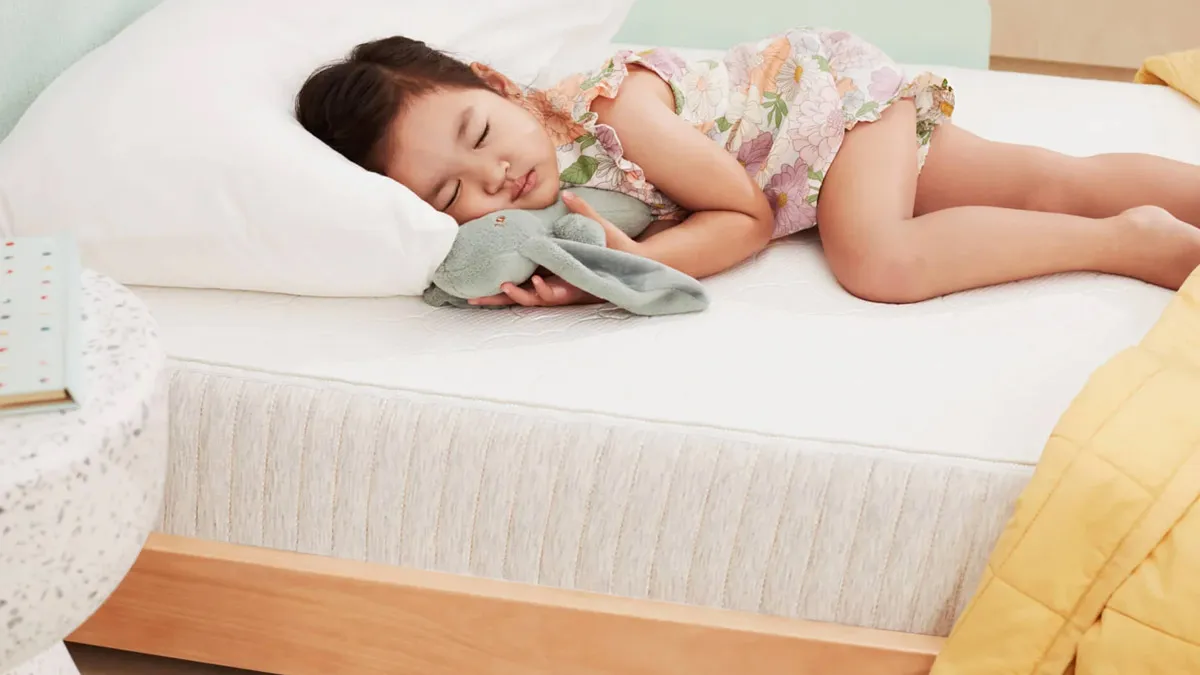
Be wary of marketing terms like "cooling gel", "memory foam technology", or "advanced foam systems" - these usually mask the fact that the mattress is made from petrochemical-based foams. When in doubt, look for clear material descriptions rather than fancy marketing terms. Natural materials speak for themselves without needing buzzwords to sell their benefits.
Understanding mattress construction: A simple guide
Think of a kids’ mattress as a well-designed sandwich - each layer plays a crucial role. Let's break down these layers in simple terms:
- The Cover:this is your child's direct contact with the mattress (after bed sheet and protector), and it plays a vital role in comfort and breathability. Quality mattress covers made from natural materials like pure Tencel, organic cotton, or bamboo fabric ensure proper temperature regulation and moisture control.
- Comfort Layers: these intermediate layers work with the core to create the perfect balance of support and comfort. Some innovative designs, like the hybrid mattress, feature an extra 5cm edge support layer around the perimeter. This thoughtful touch prevents that 'rolling off' sensation when your child sits on the edge.
- The Core: the mattress foundation (usually 50-70% of the mattress height). Whether it's natural latex, pocket springs, or high-density foam, this layer provides the essential support your child needs. This is where the magic of proper spinal alignment happens.
Synthetic materials in any layer, particularly the cover, can compromise your mattress's performance and potentially harm your child's health through toxic off-gassing and VOC emissions. Many brands use polyester blends or synthetic materials that block natural airflow, trap heat, and reduce breathability, creating an uncomfortable sleep environment.
Always look for transparent material descriptions when shopping for the best mattress for your kids. A healthy sleep environment starts with natural materials from the core to the cover, ensuring your child enjoys safe, restorative sleep through their formative years.
Pro Tip: Many brands advertise "Tencel blend" or "bamboo-infused" covers. Always check the actual composition—a natural material mixed with polyester will not provide the same benefits as a 100% natural cover.
Temperature regulation & sleep comfort
Airflow regulation in a children's mattress isn't just about the surface—it's about how all the layers work together to create a comfortable sleep environment. The core layer provides the foundation for airflow, while the cover plays a crucial role in moisture management and heat dissipation.
In Australia's diverse climate, which can shift from scorching summers to cool winters, thekids mattressesshould adapt to seasonal changes. Children naturally perspire more during specific developmental stages, making temperature control essential.
Natural materials like cotton, wool, and latex offer superior breathability to their synthetic counterparts, helping maintain balanced body temperature throughout the night.
The surrounding bedding significantly influences overall sleep quality. Complementing your child's mattress with natural fibre sheets (cotton, bamboo, or linen) enhances moisture-wicking properties, creating a sleep sanctuary that remains cool in summer and cozy during cooler months—a crucial consideration for growing bodies in Australia's variable climate.

Health, safety, and certifications for Kids Mattresses
Children's bodies are susceptible to their environment, absorbing everything around them - including what they breathe in from their mattress. During these crucial years, exposure to endocrine disruptors and harmful chemicals can impact:
- Hormonal development.
- Respiratory health.
- Immune system function.
- Sleep quality and growth.
Synthetic mattresses often release Volatile Organic Compounds (VOCs) and may contain chemicals found in flame retardants. While these emissions decrease over time, they can affect children's developing systems. Natural materials provide a safer option with minimal off-gassing, helping to reduce environmental impact and lower the risk of asthma development.
A healthy sleep environment goes beyond just the mattress—every element in your child's room matters, from bedding to children’s beds and furniture. Choose natural, non-toxic materials and ensure good ventilation. For an utterly healthy bedroom setup, check out our children's beds & furniture guide and bedding guide to learn how to create the perfect sleep sanctuary for your little one.
Key certifications to look for:
If you have doubts about the mattress, you can check for certifications, as they provide additional reassurance.
- GOTS/GOLS: Gold standard for organic materials.
- CertiPUR-US: Ensures foam meets safety standards.
- OEKO-TEX Standard 100: Tests for harmful substances.
Certifications independently verify a brand's organicor non-toxic claims for bedding products. Remember that lack of certification doesn't automatically mean poor quality. Certification processes are often lengthy and expensive, which can be prohibitive for some manufacturers, especially smaller companies.
Examining the actual materials used in the mattress is what truly matters. Even without official labels, a transparentbrand that details its components deserves consideration. When choosing your child's mattress, always prioritise the intrinsic quality of materials over certifications.
The importance of mattress protection for kids
Whether your mattress comes with a zip-off cover or not, investing in a kid's mattress protector is essential - especially for children under 10. A good mattress protector acts as your first line of defence, protecting your investment from accidents, spills, dust mites, and moisture while extending its lifespan.
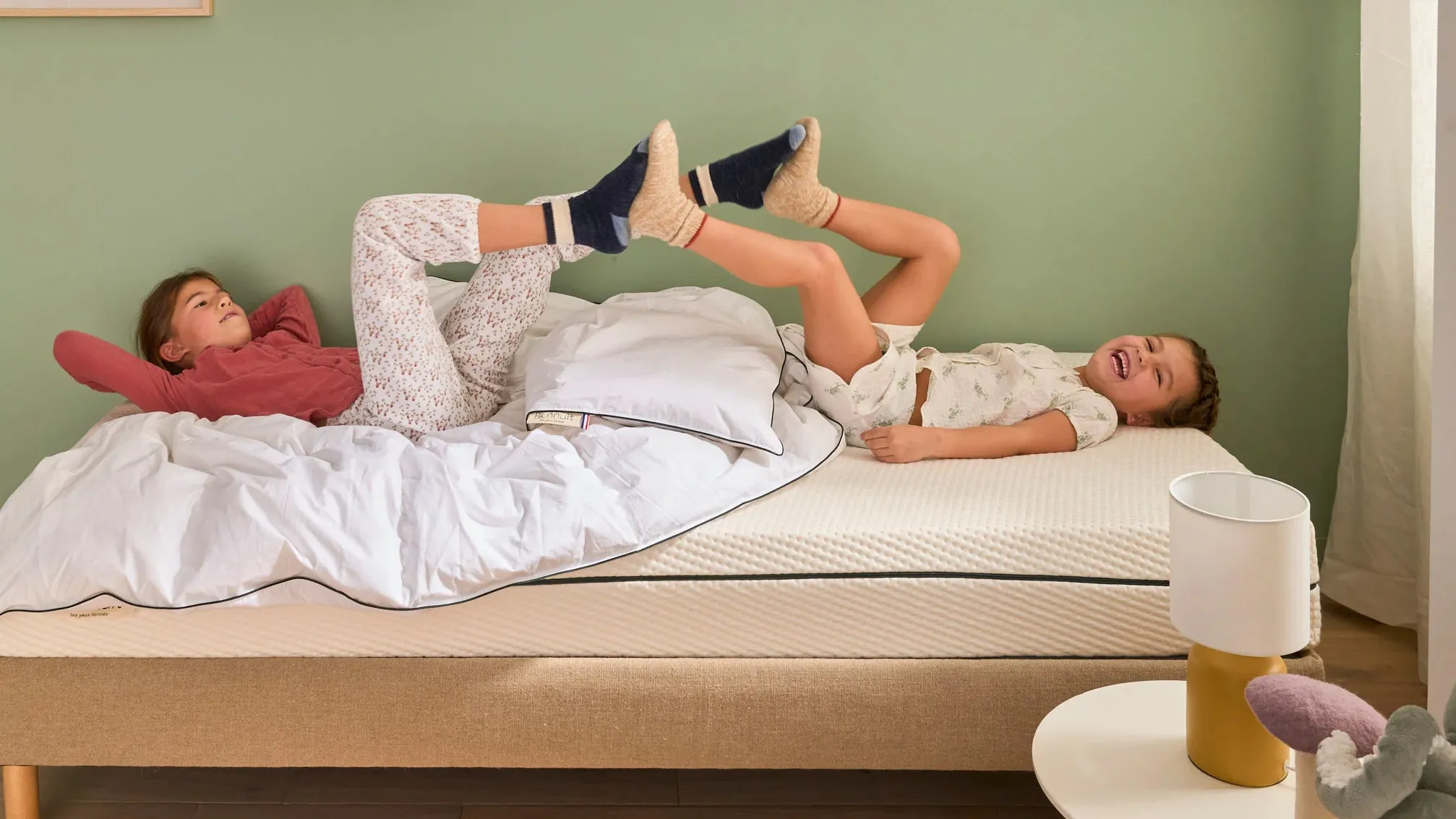
Be cautious when selecting waterproof protectors - not all waterproofing methods are created equal. Many synthetic waterproof treatments can contain harmful chemicals, compromising your efforts to develop a healthy sleep environment. Instead, look for protectors made from dense natural materials like cotton or bamboo, which offer good moisture resistance without chemicals. If choosing a waterproof protector, ensure it uses safe, non-toxic waterproofing methods that won't expose your child to harmful substances.
Think of a mattress protector as insurance for your investment - a small cost that can double the life of your child's mattress while creating a healthier sleep environment. This simple layered approach allows for easy washing, ensures you always have a clean backup, and, most importantly, preserves your mattress in top condition.
Investing in your child's sleep quality
Thinking long-termabout your child's sleep makes both health and financial sense. A $200 budget mattress may seem like a bargain, but replacing it every 3-5 years quickly adds up. By the time your child enters university, you'll have spent more than the cost of a premium natural mattress—without any quality sleep benefits that would have supported their development throughout those crucial years.
Be aware that a high price tag doesn't always mean high quality. Some brands sell synthetic foam mattresses for over $800, disguising them as "eco-friendly" and "wellness." Always check the actual materials—authentic natural mattresses have nothing to hide.
So please, don’t fall for marketing tricks and skip cheap synthetic mattresses from Kmart or IKEA. Even if your budget is tight, investing in the best mattress for kids is one of the smartest choices you can make for your child’s health and long-term well-being. If there’s one piece of furniture that truly matters for their growth, it’s their mattress.
Your child will spend nearly 4,000 hours per year on their mattress—almost half their daily life. Choosing the right mattress isn't just about comfort—it's an investment in their health, growth, and well-being. Make it count.

